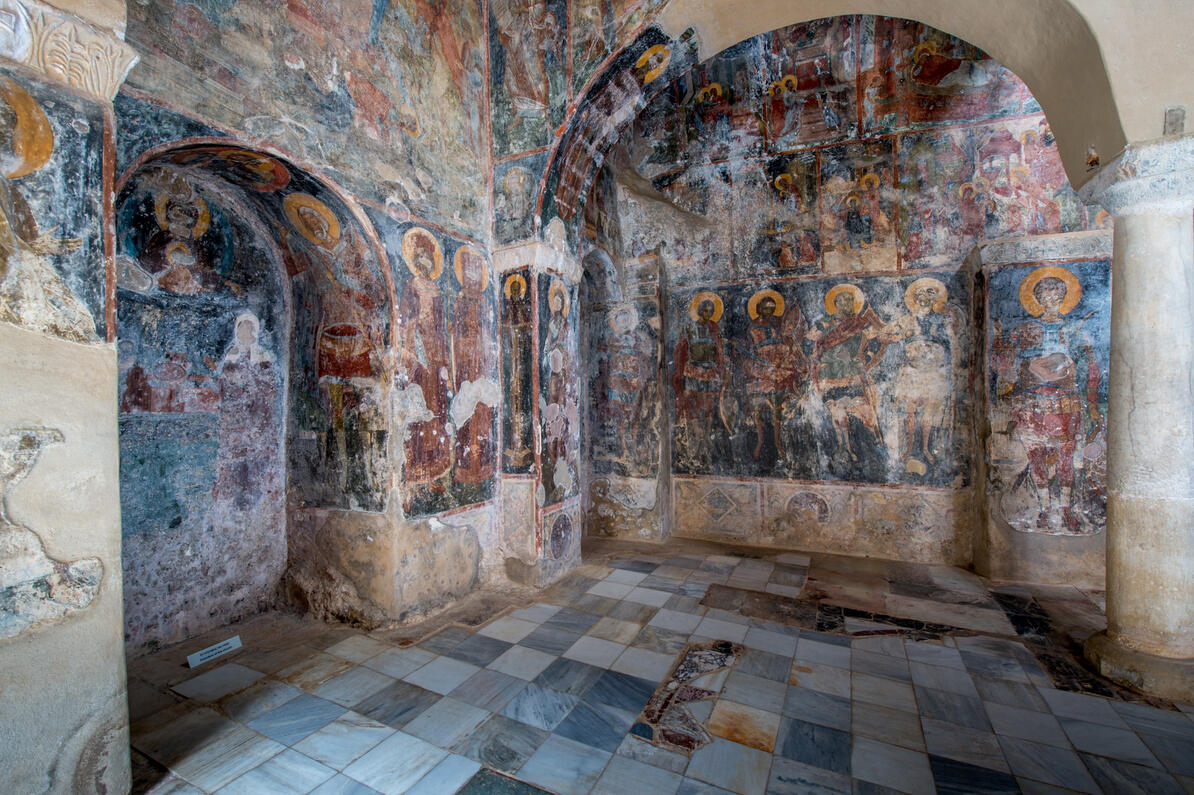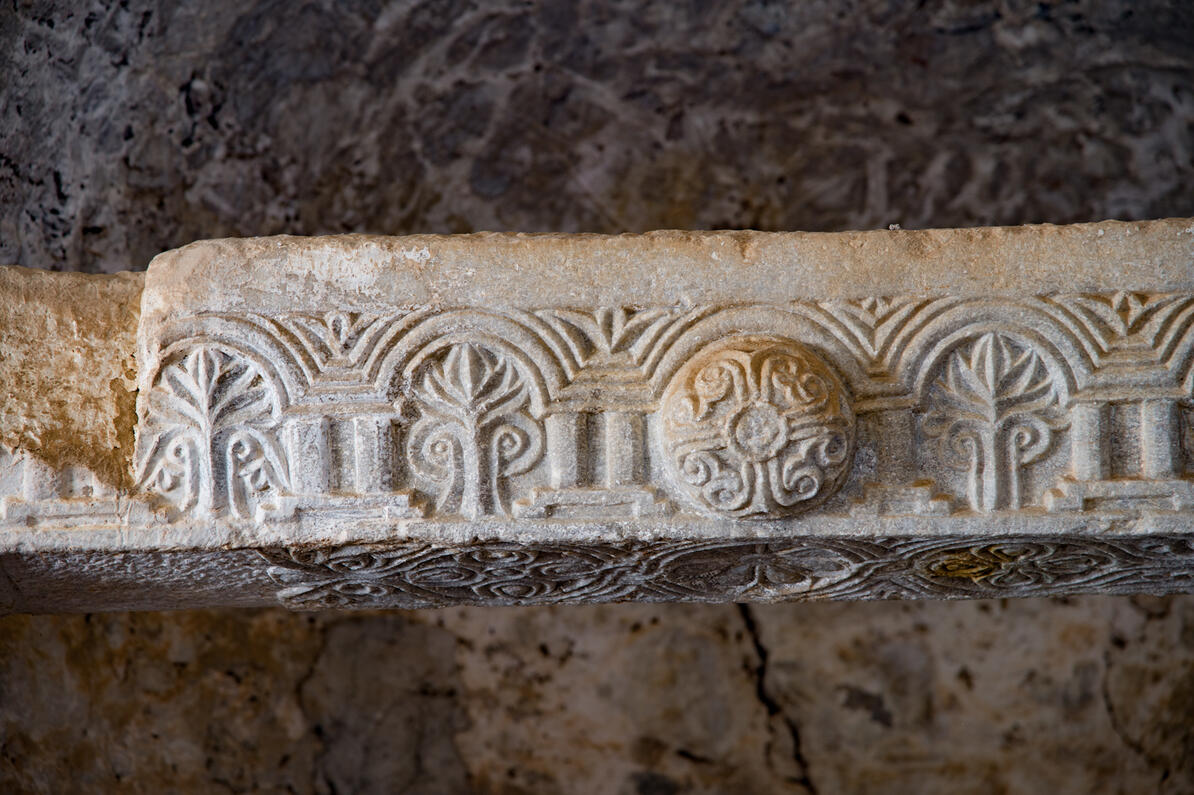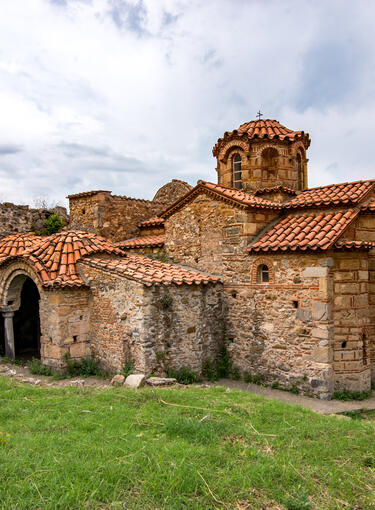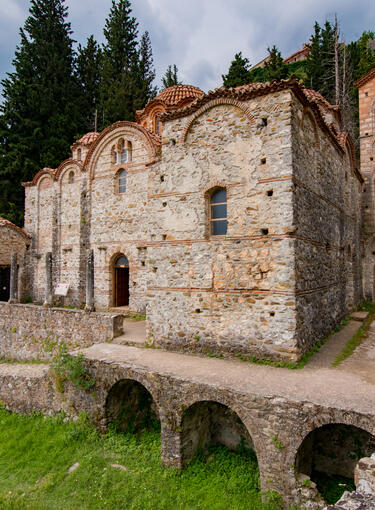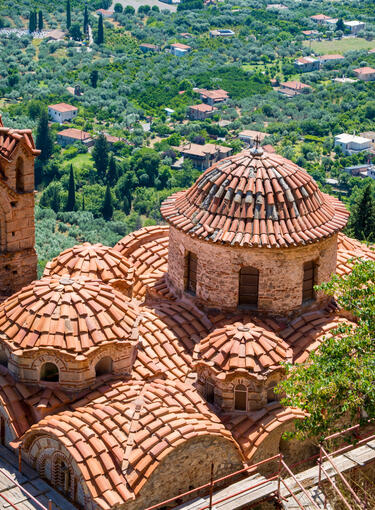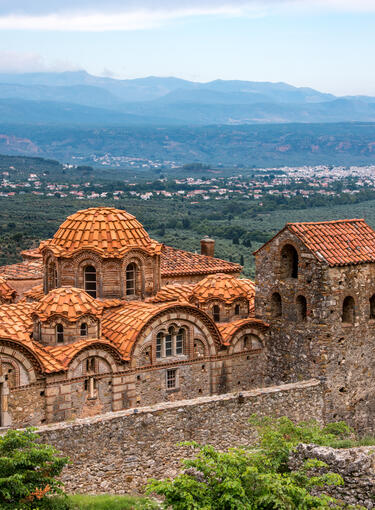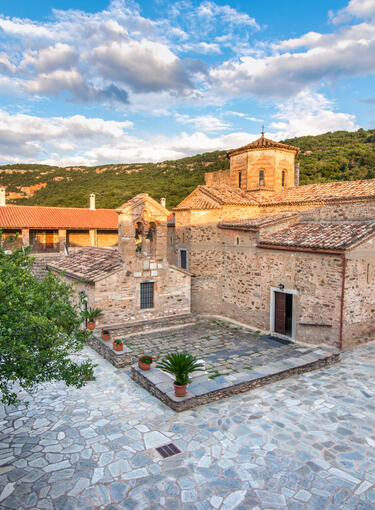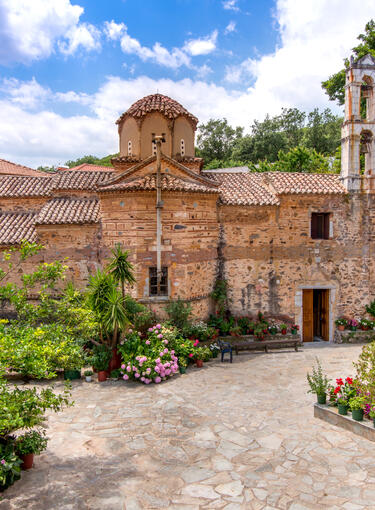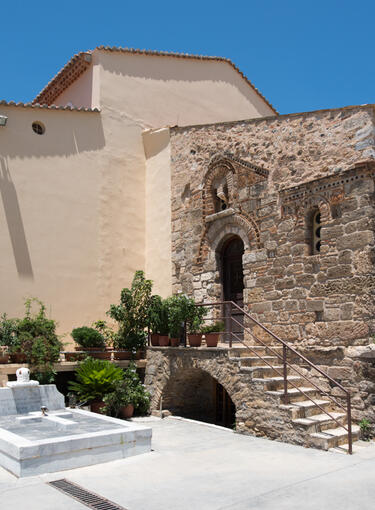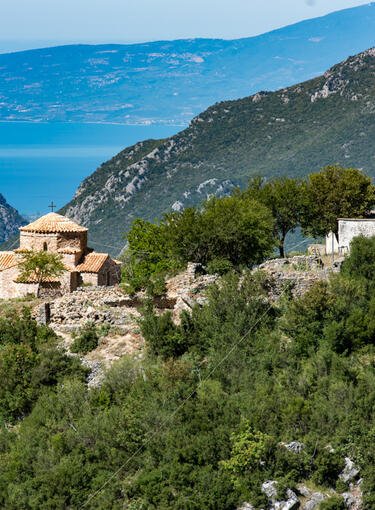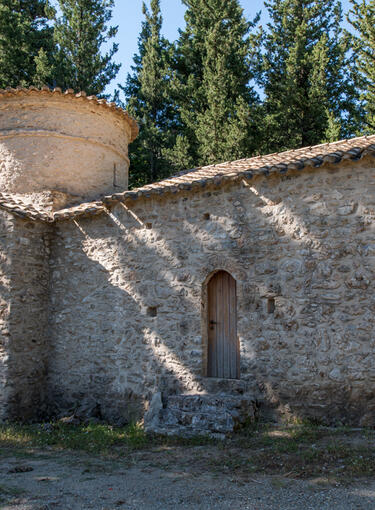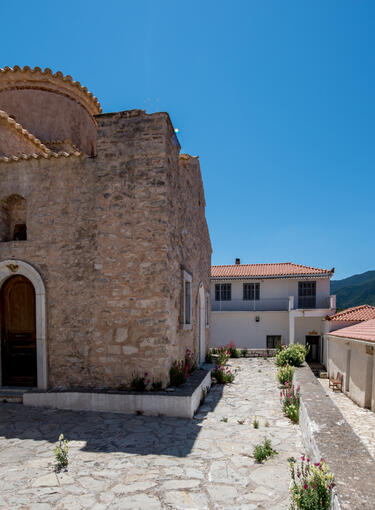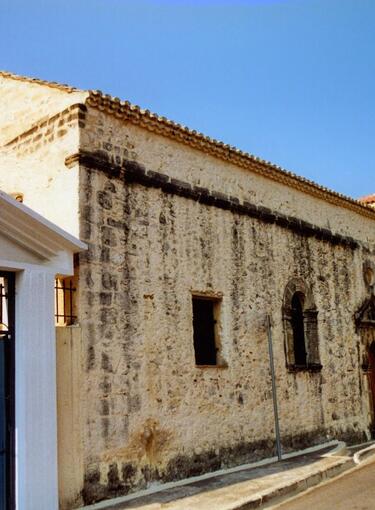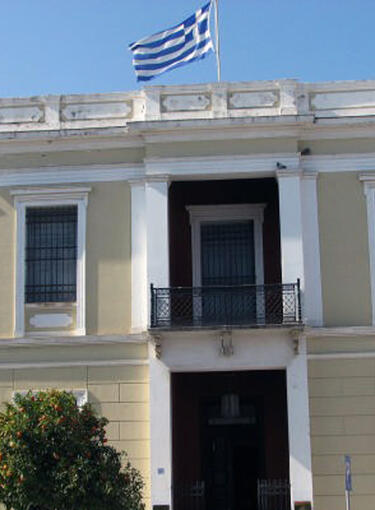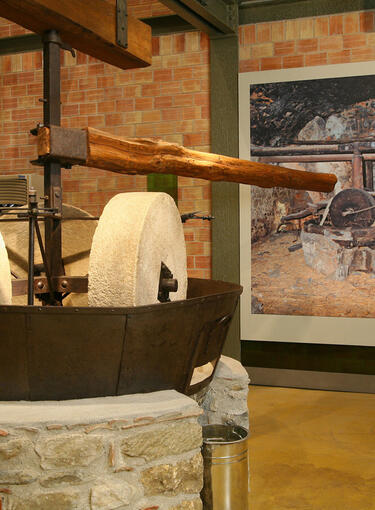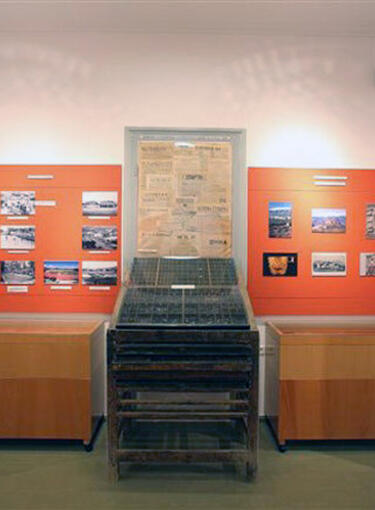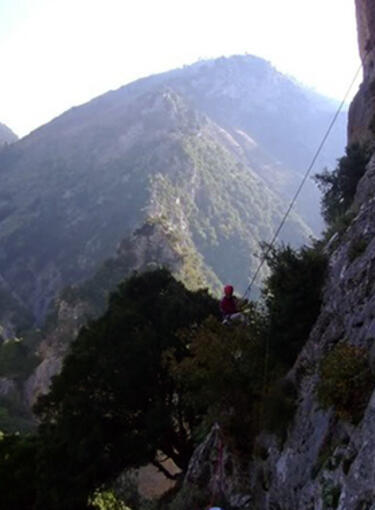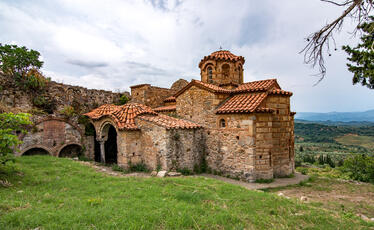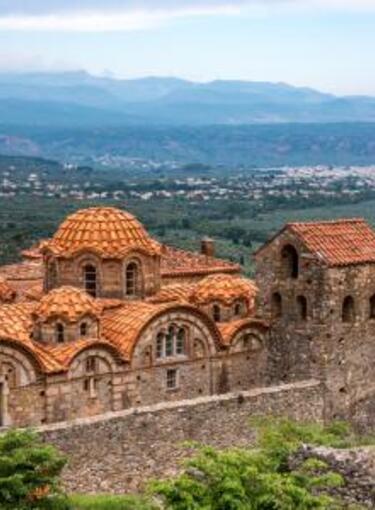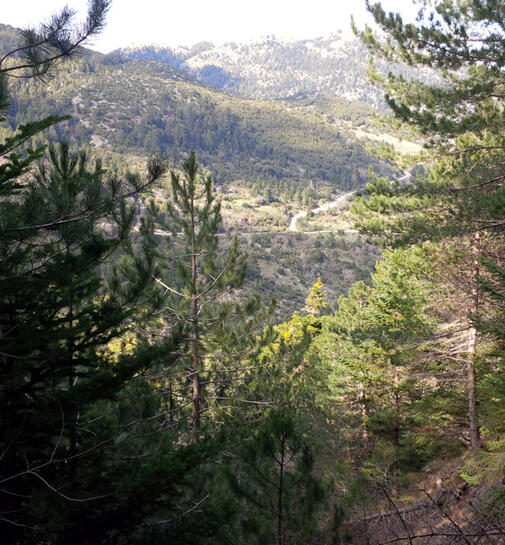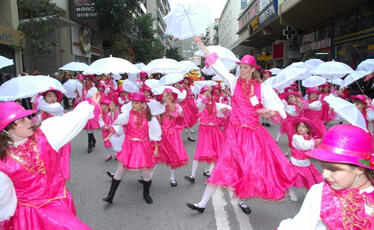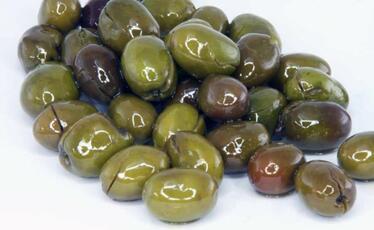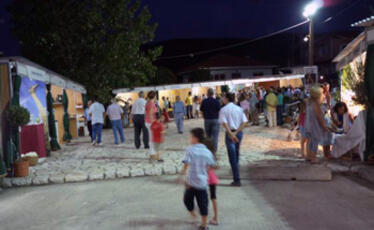On the southeastern edge of the hill of Mystras, at Kato Poli, next to the steep cliff, is the Monastery of Perivleptos, dedicated to Virgin Mary. To the complex leads the road that comes from the metropolis and the road that descends from the Monastery of Pantanassa.
The monastery was probably founded in the middle of the 14th century by the first despot of Mystras, Manuel Kantakouzenos (1348-1380) and his wife Isabella de Lusignan. To this conclusion leads us a marble slab over the arched gate of the monastery’s precinct, which depicts two standing lions that frame the monogram of the Perivleptos and a series of lilies. The standing lions confronting each other were the coat of arms of Manuel Kantakouzenos and his wife, while the lilies is a Frankish decorative element and can be seen in other spots of the church, emphasizing the Frankish origin of Isabella. The marble slab was placed on this spot in the year 1714, as testified by an inscription that was carved on its lower part. Possibly the faces of the couple of the lords will be identified with the two faces of the wall painting at a conch on the western wall of the church, which offer to Virgin Mary a model of the church.
From the monastery survive the precinct with the interior and exterior gate, the tower οf the refectory, two buildings and the catholicon. The catholicon belongs to the type of the simple, two-columned, cross-in-square church, with five-sided arches at the altar area. On the northern side there must have been a portico, which was later became a side narthex, perhaps by Leo Mavropappas, as indicated by the double monogram of his family. Later are the chapels of the church, Agios Panteleimonas and Agia Paraskevi next to the arches, with a part extending under the rock. Its walls are built according to the usual Greek cloisonné system of masonry. Its interior is richly decorated with sculptures and wall paintings. The sculptures come mainly from older monuments, while the wall painting decoration, the work of four painters, dates from approximately 1360. It is one of the most important surviving painting set of the 14th century and is related to the artistic tradition of Constantinople.
Informations
additional
Date:
middle of the 14th century
Season:
Byzantine
Holy Metropolis:
Monemvasia and Sparta
Under the Supervision of:
Ephorate of Antiquities of Laconia
Address:
Kato Poli




